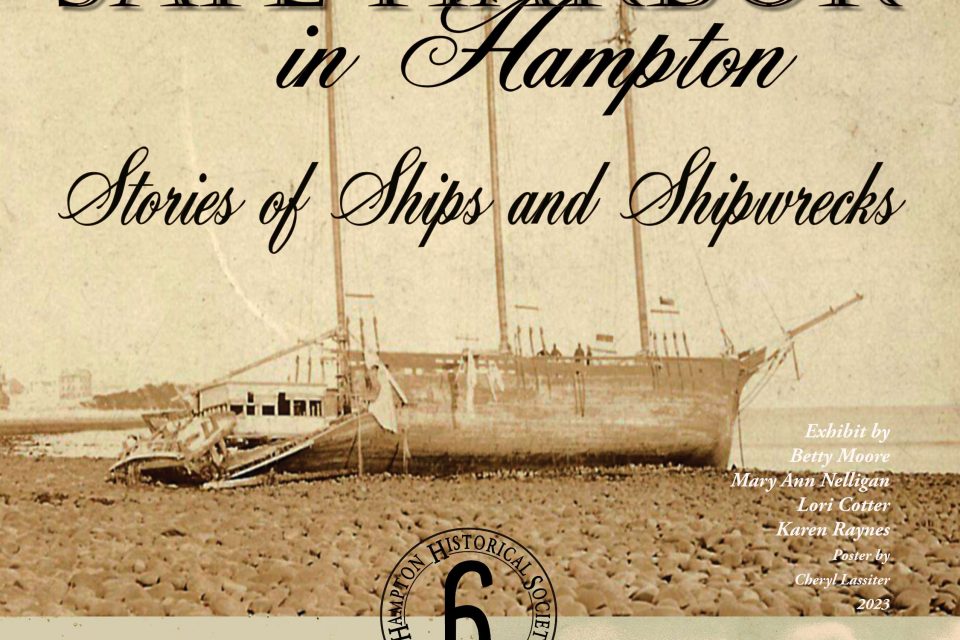Hampton – Seeking Safe Harbor in Hampton – Stories of Ships and Shipwrecks, the new exhibit at the Tuck Museum of Hampton History, shows Hampton connections to the sea from its earliest settlers to the ships they built, life-saving stations, lighthouse keepers and the many wrecks that occurred on the coast.
“The exhibit was inspired by local teacher and historian Harold Fernald who collected and donated to the museum a wealth of information about ships and shipwrecks,” said Karen Raynes who, along with Lori Cotter, Betty Moore and Mary Ann Nelligan, curated it.
While the exhibit is concentrated in one room, its logo can be seen throughout the museum, pointing visitors to other items that are included.
“Early on Hampton was a busy settlement of shipyards, shipbuilders, sawmills and merchants,” said Raynes. “Hampton did not have deep harbors like Newburyport, Portsmouth and Salem, but they built small boats and ships that carried lumber, cod fish, potatoes, apples, sheep, cattle, rum and later coal. The community grew in number and wealth because of these ships and also the wrecks, whose goods could often be claimed by the townsfolk.”
Some of the shipwrecks showcased are Schooner Glendon, Schooner Frank, Mast Ship St. George, Schooner May A. Brown and Frank Nudd’s fishing sloop.
The Tuck Museum, at 40 Park Avenue in Hampton, is open Wednesdays, Fridays and Sundays 1-4 pm.
Ships and Shipwrecks Exhibit Opens at Hampton’s Tuck Museum
Tuesday April 25, 2023

Designed by Cheryl Lassiter, the poster for the exhibit shows (top) Coal Schooner Glendon, wrecked on Hampton Beach February 9, 1896 (bottom left) Cutler’s Seaview Hotel – all seven crew of the Glendon were rescued, warmed and revived there (bottom right) Hampton Life-Saving Station at North Beach – as a result of the wreck of the Glendon this station was built in 1898.



